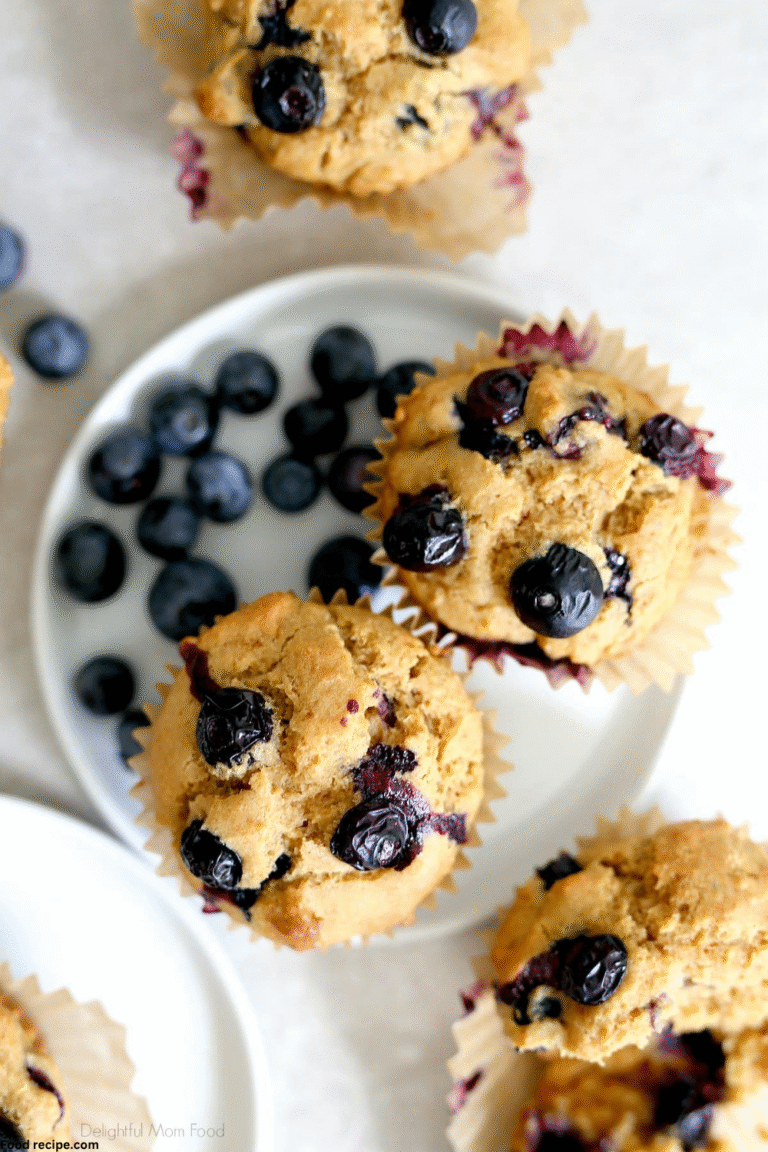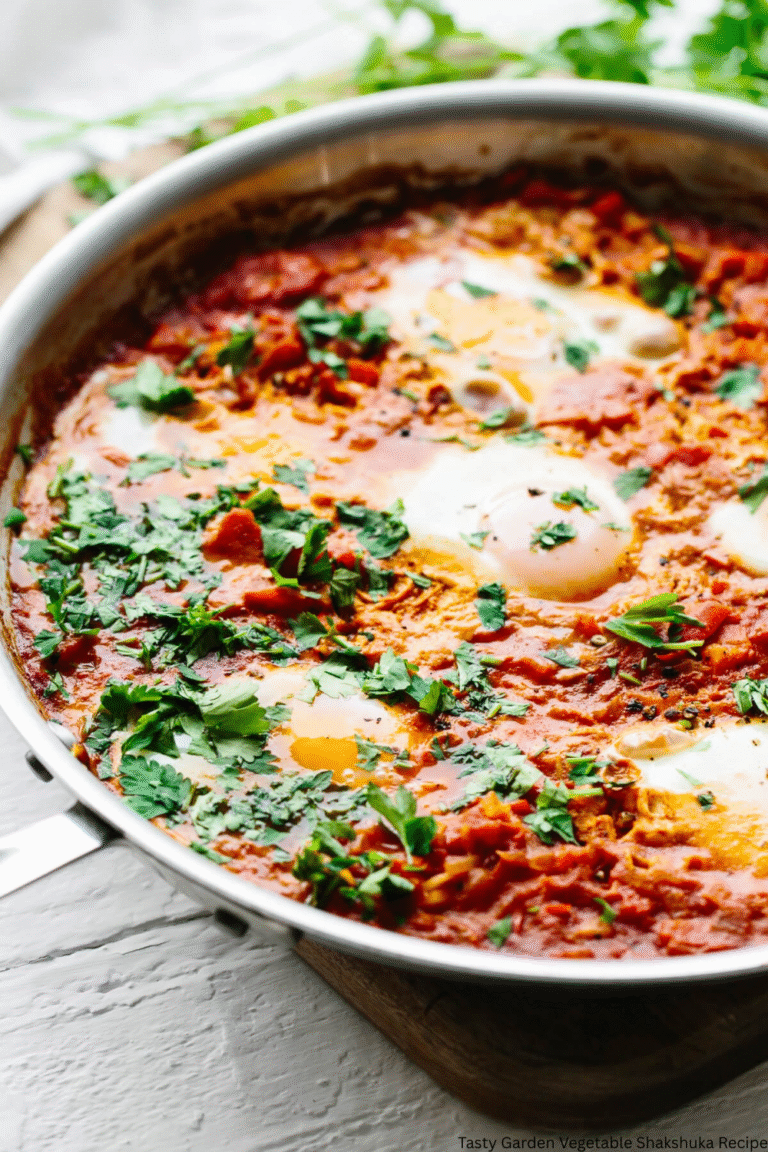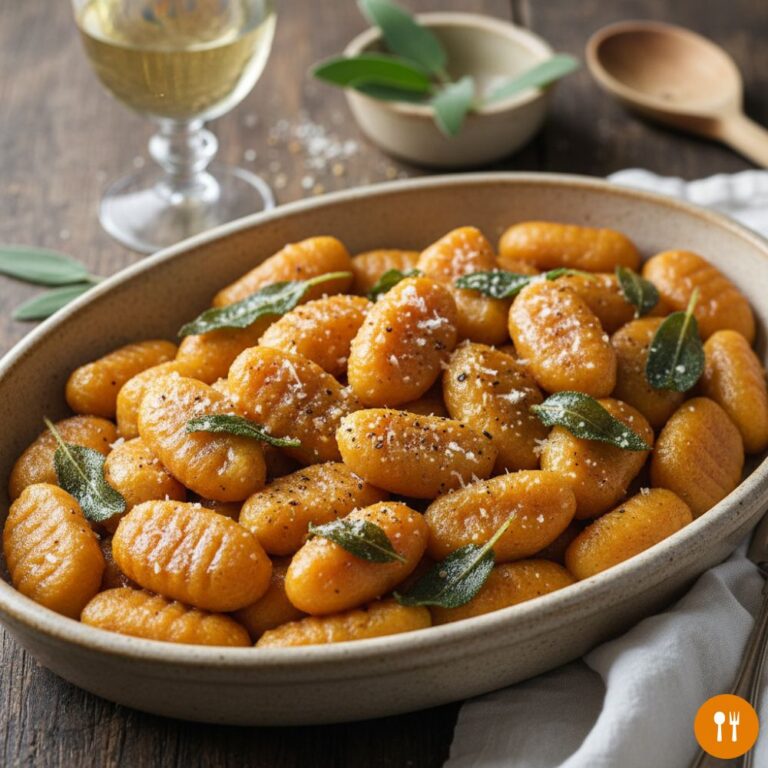The Gluten Free Biscuit Recipe That Works Every Time
Discover the ultimate gluten free biscuit recipe that’s soft, fluffy, and fool proof every time! Learn the best flour blend, step-by-step instructions, troubleshooting tips, and nutrition notes for perfect homemade Gluten free biscuits recipe that work every time.
Introduction
If you’ve been searching for the perfect Gluten free biscuit recipe, you already know how tricky it can be to get them light, fluffy, and buttery without falling apart. Many gluten-free biscuit recipes turn out dense or crumbly, but this tried-and-true method delivers soft, flaky biscuits every single time. Whether you want them for breakfast, brunch, or as a side with dinner, these biscuits are a game-changer for anyone following a gluten free diet.
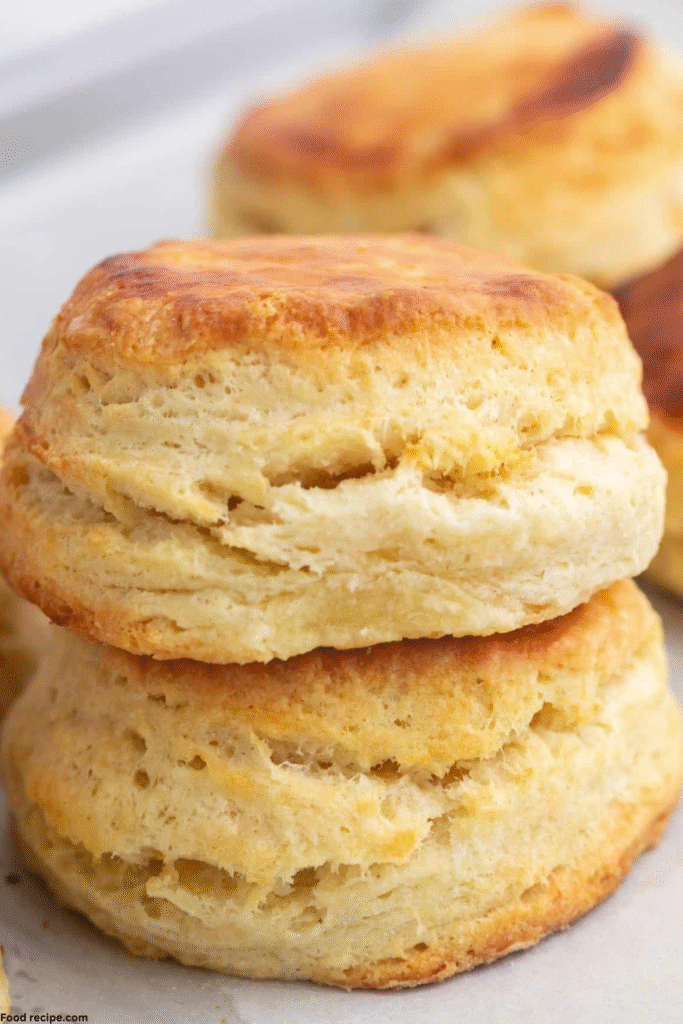
Table of Contents
Why You’ll Love This Gluten-Free Biscuit Recipe
- Foolproof texture – light, tender, and never dry.
- Simple ingredients – pantry staples you already have.
- Customizable – enjoy plain, cheesy, or even sweet biscuits.
- Kid-approved – picky eaters won’t know they’re gluten-free!
This recipe has been tested with the best gluten free flour blends to make sure your biscuits come out just right every time.

A Note From My Kitchen
In my kitchen, I’ve learned that the secret to perfect gluten-free biscuits is using the right flour blend and very cold butter. I often rely on Cup4Cup, King Arthur Measure-for-Measure, or Bob’s Red Mill 1-to-1—they consistently give biscuits that are fluffy inside with a golden crust.
I keep my butter cold (sometimes even frozen and grated) to create flaky layers, and I always cut biscuits with a sharp cutter without twisting so they rise tall. For variety, I sometimes add fresh herbs, cheddar cheese, or a drizzle of honey.
Gluten-free biscuits can be just as light and delicious as traditional ones—you just need the right technique.
Ingredient Notes
To make the best gluten free biscuits, you’ll need:
- Gluten-free all-purpose flour blend (with xanthan gum for structure).
- Baking powder – ensures rise and fluffiness.
- Butter (cold, unsalted) – creates layers and flakiness.
- Milk or buttermilk – adds richness and helps bind.
- Salt – balances flavor.
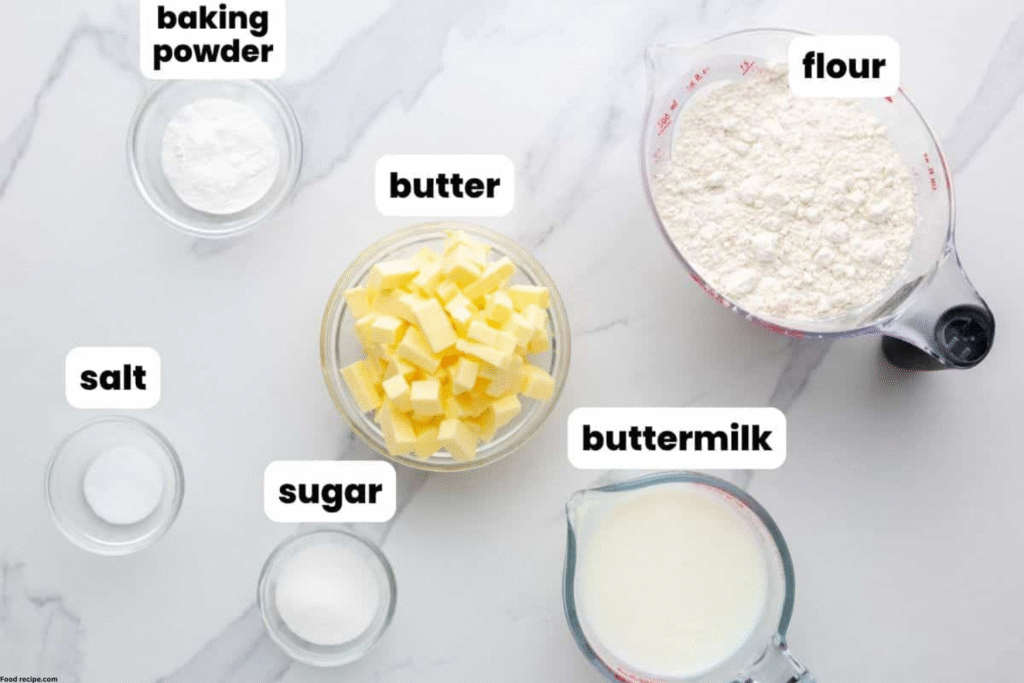
👉 Pro Tip: Brands like King Arthur Measure-for-Measure and Bob’s Red Mill Gluten-Free 1-to-1 Flour work beautifully for this recipe.
Step-by-Step Guide
1. Preheat and Prepare
Preheat your oven to 425°F (220°C). Line a baking sheet with parchment paper for easy cleanup.
2. Mix Dry Ingredients
In a large mixing bowl, whisk together gluten-free flour, baking powder, and salt. This ensures even distribution of the leavening agents.
3. Cut in the Butter
Add cold butter cubes into the flour mixture. Use a pastry cutter or your hands to cut in the butter until the mixture looks like coarse crumbs. This step is key to getting those classic flaky biscuit layers.
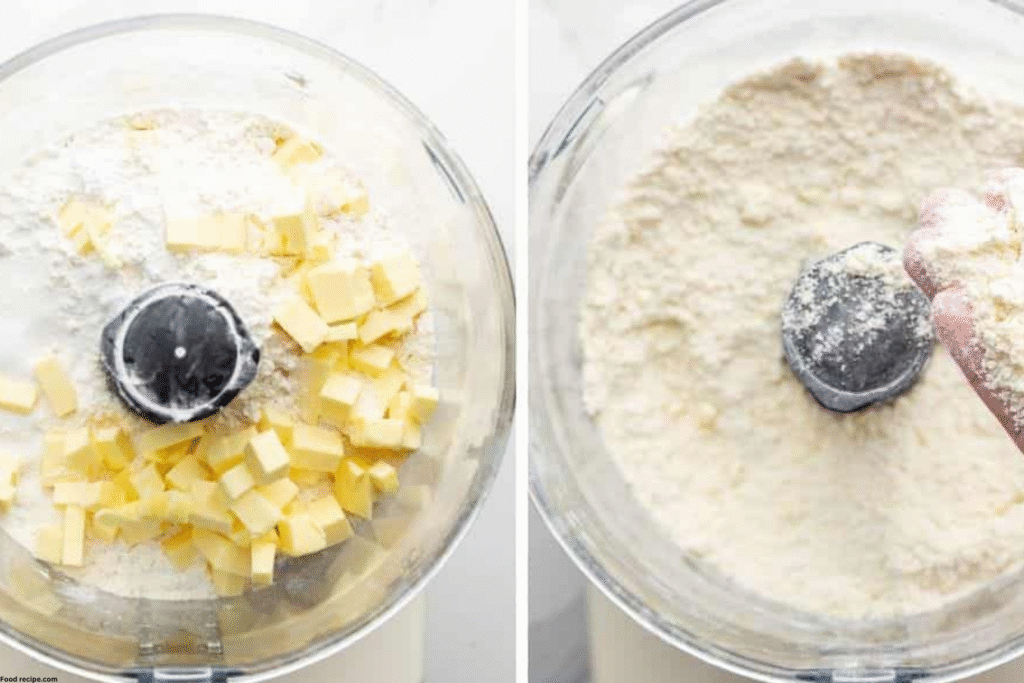
4. Add the Milk or Buttermilk
Slowly pour in milk or buttermilk and stir gently until just combined. Avoid overmixing—this can make your biscuits dense. The dough should be slightly sticky.
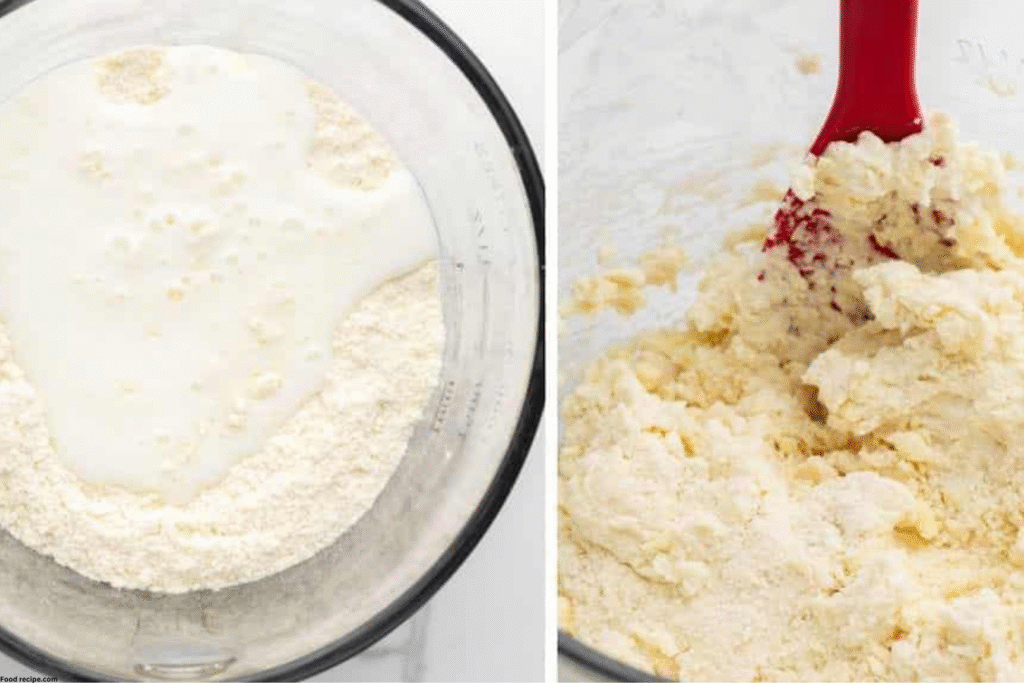
5. Shape the Dough
Turn the dough out onto a lightly floured surface. Pat it gently into a rectangle, then fold it over itself 2–3 times. This folding creates extra flakiness. Cut into rounds using a biscuit cutter or glass.
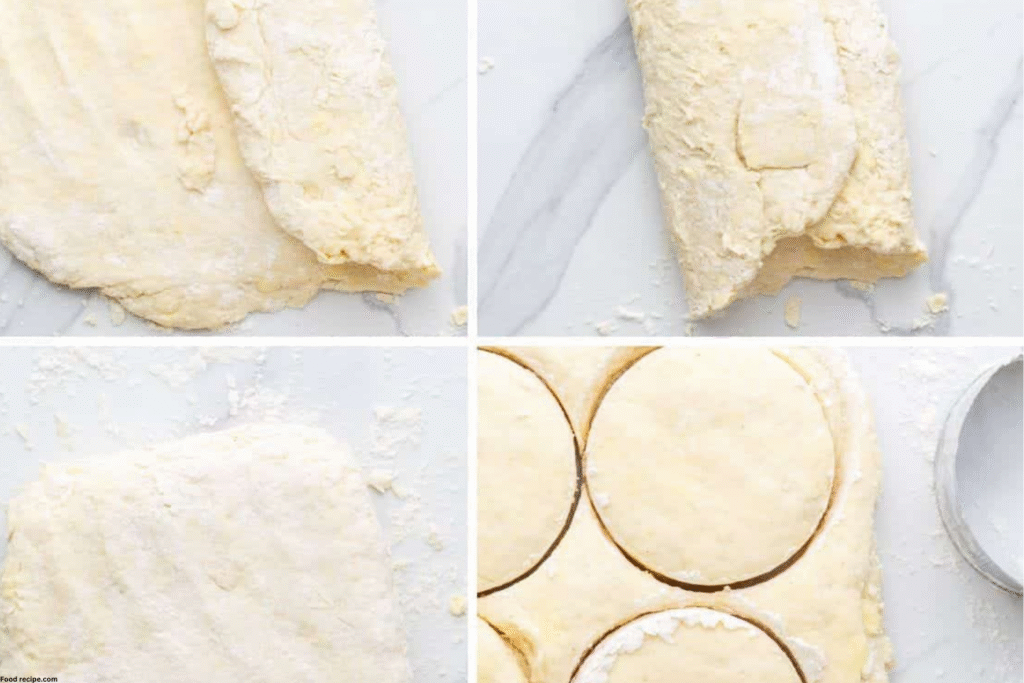
6. Bake to Perfection
Place biscuits onto the prepared baking sheet, slightly touching for soft sides or spaced apart for crispy edges. Bake for 12–15 minutes until golden brown.
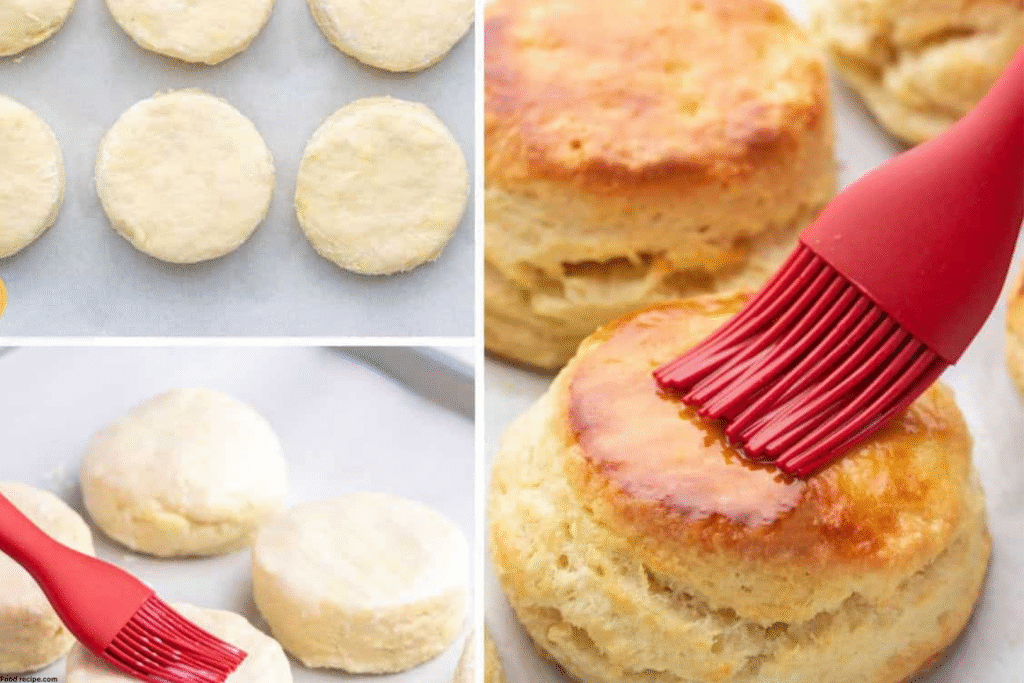
Tips for Success
✔ Use very cold butter—the secret to flaky biscuits.
✔ Don’t overwork the dough. Keep mixing minimal.
✔ Brush the tops with butter before baking for extra golden color.
✔ Add shredded cheddar, garlic powder, or herbs for a savory twist.
Storage and Freezing
- Store leftover biscuits in an airtight container at room temperature for 2 days or refrigerate for up to 5 days.
- Freeze baked biscuits in a freezer-safe bag for up to 3 months. Reheat in the oven at 350°F until warmed through.
Gluten-Free Biscuit Troubleshooting
Even with the right recipe, biscuits don’t always turn out perfect the first time. Here are common problems and fixes:
- Biscuits are too dense
– Your butter may have melted before baking. Make sure it’s very cold and handle the dough as little as possible. - Biscuits didn’t rise
– Check your baking powder—expired leavening won’t lift. Also, avoid twisting the cutter, which seals edges and prevents rise. - Biscuits are crumbly or dry
– Add a little extra buttermilk or cream to hydrate the dough. Different flour blends absorb liquid differently. - Biscuits taste gummy
– This can happen if the dough is overmixed. Mix just until ingredients come together.
Frequently Asked Questions
1. Can I make these dairy-free?
Yes! Substitute vegan butter and almond milk (or oat milk) for a dairy-free option.
2. What’s the best gluten-free flour for biscuits?
Blends with xanthan gum or guar gum give the best results. King Arthur and Bob’s Red Mill are reliable options.
3. Can I make drop biscuits instead?
Absolutely! Just scoop spoonfuls of dough onto the baking sheet instead of cutting shapes.
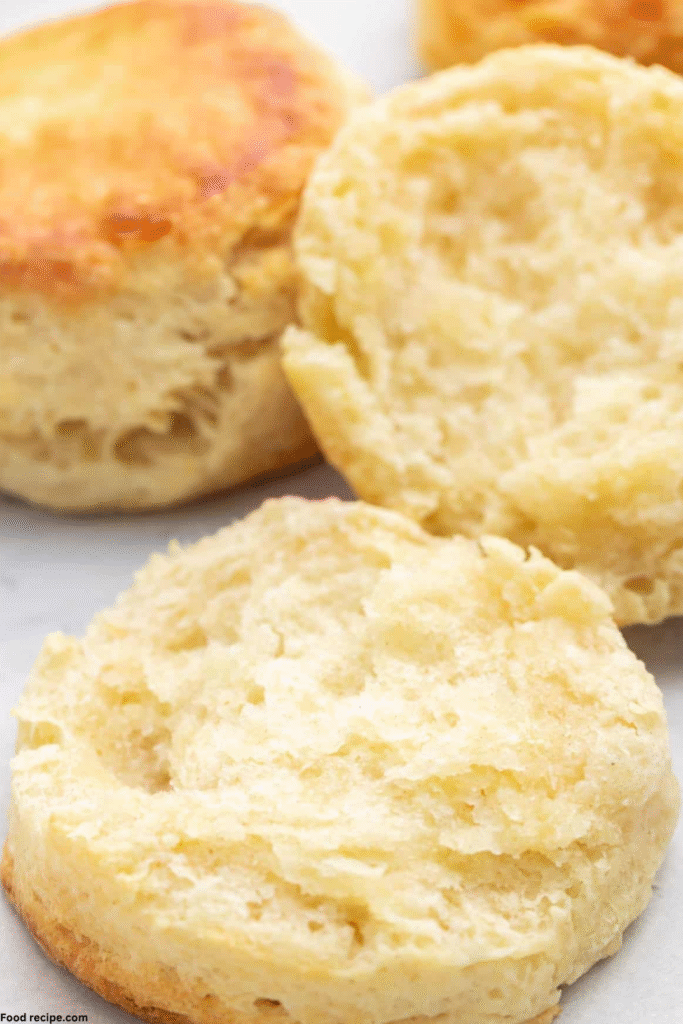
Love This Recipe? ❤️
If you enjoyed these fluffy gluten-free biscuits, don’t forget to:
✔ Share this recipe with friends and family
✔ Save it for your next brunch or holiday dinner
✔ Subscribe to get more gluten-free recipes that actually work every time!
Why This Recipe Works Every Time
The combination of the right flour blend, cold butter, and proper technique ensures you get tender, flaky gluten-free biscuits that taste just like traditional ones. This recipe is simple enough for beginners but impressive enough to serve at any meal.
Best Gluten-Free Flour Blends for Biscuits
These flour blends are frequently praised in gluten-free baking for giving good texture and rise in biscuits:
| Flour Blend | Why It’s Good for Biscuits / What Bakers Like About It |
|---|---|
| Cup4Cup Gluten-Free All-Purpose Flour | Rises nicely, gives a texture close to wheat flour in biscuits. Many biscuit recipes find it produces the flakiest layers. |
| King Arthur Measure-for-Measure Gluten-Free Flour | Works well in one-to-one substitution, reliable texture, good binding. Frequently used in biscuit recipes. |
| Bob’s Red Mill 1-to-1 Gluten-Free Baking Flour | Affordable and easy to find. Gives decent results; sometimes slightly gritty, but great when mixed correctly. |
| Better Batter Original Gluten-Free Blend | Many testers report smooth, non-gritty biscuits with good rise using this blend. |

Instructions
- Preheat oven – Set to 425°F (220°C). Line a baking sheet with parchment paper.
- Mix dry ingredients – In a large bowl, whisk 2 cups gluten-free all-purpose flour, 1 tablespoon baking powder, and ½ teaspoon salt.
- Cut in butter – Add ½ cup cold unsalted butter, cubed. Cut in using a pastry cutter until mixture resembles coarse crumbs.
- Add milk – Pour in ¾ cup cold buttermilk (or milk of choice). Stir until dough comes together. Do not overmix.
- Shape biscuits – Turn dough onto a lightly floured surface. Gently pat and fold 2–3 times, then cut into rounds.
- Bake – Place biscuits on baking sheet, slightly touching. Bake 12–15 minutes until golden brown.
- Serve – Brush with melted butter and enjoy warm with jam, honey, or gravy.
Notes
- Use very cold butter to ensure flaky layers.
- If dough feels too dry, add 1 tablespoon extra milk at a time.
- Want savory biscuits? Add ½ cup shredded cheddar and 1 teaspoon garlic powder.
- For sweet biscuits, add 2 tablespoons sugar and serve with fruit or cream.
Special Note
For best results, use a gluten-free flour blend with xanthan gum. Without it, the biscuits may crumble and not hold their structure. Always check your blend’s label before baking.
Nutrition (Per Biscuit – Approximate)
- Calories: 190
- Carbs: 27g
- Protein: 3g
- Fat: 8g
- Fiber: 2g
- Sugar: 1g
Nutrition Disclaimer
Nutritional information is provided as an estimate only. Exact values may vary depending on the specific products, brands, and portion sizes you use. For the most accurate results, calculate using your own nutritional calculator.

